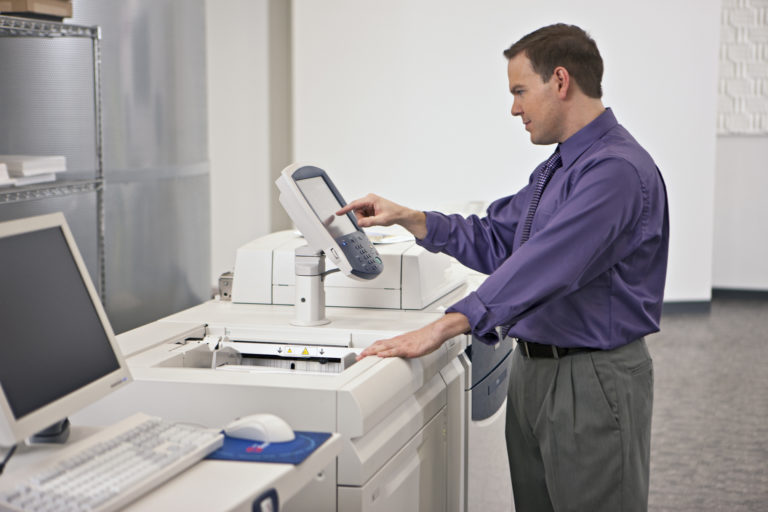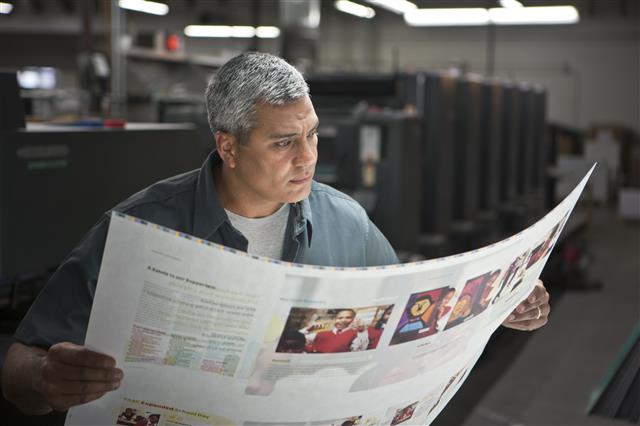Written by Howard Fenton
Senior Technology Consultant
NAPL
 In a recent blog we talked about the impact of competing printing technologies including digital, inkjet and offset printing and asked if one printing technology will displace another. Although the speed of change is increasing, my opinion has not changed on this subject in the last few years. Here is what I wrote about this a few years ago, when the controversy first appeared.
In a recent blog we talked about the impact of competing printing technologies including digital, inkjet and offset printing and asked if one printing technology will displace another. Although the speed of change is increasing, my opinion has not changed on this subject in the last few years. Here is what I wrote about this a few years ago, when the controversy first appeared.
While tremendous advances have been made in inkjet printing technology, inkjet simply does not have the potential in the near future to become the dominant printing technology in the face of new advances in electrophotographic (EP: laser, or toner-based printing) and offset printing. However, the new announcements blur the advantages of each technology more than ever before.
- Of course this is just one guy’s opinion, but I think we will continue to see inkjet printing nibble away at specific markets and applications as it has done with books and transaction printing. High-speed inkjet printing will grow in specialty printing areas such as books and transactional printing, as well as in new markets such as newspapers, packaging and labels. While longer runs have typically offered cost efficiencies and customization, we have not yet seen the higher quality that is comparable to what other printing technologies offer.
- Toner printing technology’s quality and speed continue to improve, resulting in a reduced price per page, even for longer print runs historically reserved for offset printing. Toner printing has always offered the same ability to customize as inkjet.
- Offset lithographic technology will continue to automate the make-ready process and remains the dominant printing technology for the foreseeable future for the highest-quality printing and longer-run lengths.
There are two obstacles that need to be overcome for inkjet to become more dominate. First, companies need to overcome the prohibitively high cost of entry. This will occur but it will take time and it’s hard to predict when this will occur. Second although quality has increased dramatically, it has not yet approached the “tipping point” in which the quality is “comparable” to offset or so much cheaper that it is impossible to ignore.
Although demand for offset is declining, it still remains the best technology for most of the long run printed jobs. In addition, advances in offset help companies replace aging equipment and continue to drive down manufacturing costs to compete better against digital printing equipment.
Many people, including this author, have been concerned over the last few years about a slowing of the advances in the digital—specifically the electrophotographic printing technologies. But the latest electrophotographic B2 presses shows that it is still advancing.
These are some very tough issues. What are your thoughts?
- Do you think inkjet will steal market share from offset or toner?
- Do you think that toner printing has hit its peak in terms of quality and productivity?
- Do you think that offset printing technology is advancing fast enough to remain relevant?
—-
Howard Fenton is a Consultant and Business Advisor at NAPL. Howie advises commercial printers and in-plants on benchmarking performance against industry leaders, increasing productivity through workflow management, adding and integrating new digital services, and adding value through customer research.



For ofset ofcourse quantity is very important.
Inkjet steals market share from ofset or toner day by day.
Good points. But you should also consider that the “market” is a collection of niches. I think that once one takes s newspapers, packaging and labels, books and transactional documents out of the mix, it radically decreases the size of the printing market.
I agree that offset is not going away any time soon. Still by far the best trade off of quality and price.
From what I see the real disruptor may be Landa nanography. If the announcements are to be believed it delivers offset quality – ( or better ) with full variable printing.
I read this morning that Landa has a billion dollars of orders from Drupa.
Digital will coexist with offset only in a portion of the printing industry, such as proofing.
even if the quality and cost of Digital can compete with offset.
but Inkjet should be good for other business, not much for traditional printing business.
because inkjet can make wallpaper, glass, wood… various business became personal and on demand.
Inkjet for other business is a revolution, today. inkjet for offset has still a long way to go.
We can image most inkjet manufacturers will die before offset business replaced by inkjet. because over-supply of inkjet presses already seen on DRUPA.